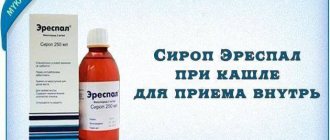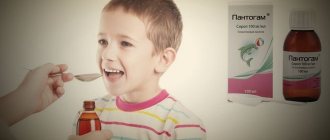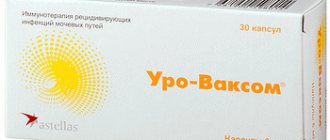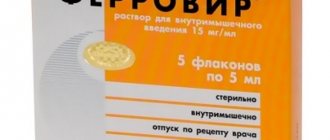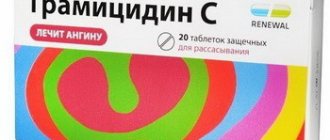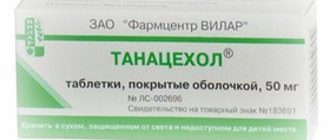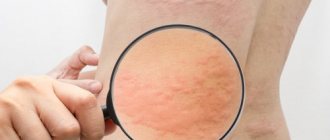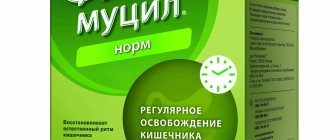Dosage form
Pertussin is an expectorant that thins mucus. Due to the effect of the drug, its viscosity decreases. This leads to the fact that sputum comes out much easier when coughing.
The drug is available in the form of a thick syrup. The product has a brown color and a pleasant smell. It is placed in a glass bottle. Its volume can be 50, 100 or 125 g. A plastic spoon is included with the drug for ease of dosing. Instructions are included with the medicine. All components are placed in a cardboard box, in which Pertussin is sold.
How to store?
The optimal place to store the drug is a cabinet , which is reserved for medicines and is not accessible to children. It protects from exposure to sunlight. It is also permissible to store Pertussin on the refrigerator .
IMPORTANT : The medicine must not be frozen!
This drug has many analogues that are similar in their mechanism of action:
- Syrups - Doctor Mom, Bronchipret, Althea, Gedelix, Tussin, Gerbion, Doctor Theiss syrup with plantain, Eucabal, Fitolor, Coldrex broncho, Linkas, Travisil, Cook, Stoptussin-Fito, Tussamag, Suprima-Broncho;
- Tablets – Mucaltin, Travisil, Thermopsol, Pectusin;
Description and composition
Pertussin is a combination drug. It allows you to simultaneously fight several pathogens at once. By acting on the human body, the drug soothes cough. Thyme extract, which is part of the drug, enhances the activity of the cilia of the ciliated epithelium of the bronchi. This allows for faster evacuation of sputum from the tracheobronchial tree.
Potassium bromide helps reduce the excitability of the central nervous system. Due to the effect of the substance, the cough reflex is suppressed. This helps reduce cough.
The effectiveness of the drug is due to the essential oils contained in the thyme herb, which is part of the product. The phenolic compounds thymol and corvalol give the drug a bacterial effect. It applies to microorganisms that most often become causative agents of infections in the bronchi and lungs - staphylococci and streptococci.
The drug has a combined composition. The product is made from components of synthetic and natural origin. The list includes:
- liquid thyme extract (another name for this plant is creeping thyme;
- potassium bromide;
- sugar syrup;
- ethanol.
Thyme extract has a mucolytic effect. Due to the effect of potassium bromide on the human body, the use of the drug leads to a slight calming effect.
What does Pertussin syrup help with?
Pertussin is a time-tested remedy that has been tested by thousands of people and effectively helps cure wet coughs, getting rid of excess mucus in the lungs, making it easier to expel. This syrup has a characteristic brown color, a strong herbal aroma and a very sweet taste. It is allowed to be taken by adults and children exactly in the proportions specified in the instructions. Excessive use of the product can cause poisoning and an allergic reaction. Please also keep in mind that the product contains alcohol, which means it should not be used by those who have problems with alcohol.
Indications for use
for adults
Doctors usually prescribe the use of cough syrup as an expectorant as part of complex therapy for the treatment of respiratory diseases. The list includes the following problems:
- bronchitis;
- tracheitis;
- pneumonia;
- ORZ.
for children
A doctor can prescribe the drug to a child if there are specific childhood diseases, such as whooping cough.
for pregnant women and during lactation
During pregnancy and breastfeeding, the use of the drug is strictly contraindicated.
Contraindications
The drug has a fairly extensive list of contraindications. It is worth familiarizing yourself with the list of problems for which the use of the product is strictly prohibited in advance. The use of the drug is contraindicated in the following cases:
- in the presence of traumatic brain injuries or disorders;
- a person suffers from epileptic seizures;
- in case of personal hypersensitivity;
- during pregnancy or breastfeeding;
- in case of individual intolerance to sugars;
- with alcoholism;
- in the presence of brain pathologies;
- the patient's age is less than 3 years;
- with decompensated CHF.
If patients with diabetes mellitus or children over 3 years of age need the drug, the medicine should be used with caution. The drug contains ethanol.
Instructions for use of Pertussin
Taking the drug involves long-term treatment, up to two weeks. It is necessary to take the syrup even after the symptoms of the disease have gone away, otherwise, if you stop taking Pertussin without authorization, the signs of the disease may return again. A doctor should prescribe Pertussin, taking into account all the chronic diseases that the patient suffers from and contraindications for use.
Many patients are interested in how to drink Pertussin: before or after meals? The medicine contains a large amount of sugar, so you need to drink it after meals so as not to spoil your appetite, which is already weak in patients, especially children.
It is important not to reduce or increase the prescribed dose of the drug, using syrup in the amount prescribed by the doctor
How to take for adults
Adults and children over 14 years of age take Pertussin syrup 15 ml at a time three times a day. No matter how painful the cough, you cannot drink more than this dose, otherwise an overdose of bromine may occur. If the concentration of bromine in the body exceeds the maximum permissible dose, then a person may experience the following signs of poisoning:
- pale skin;
- apathy, weakness, dizziness, fainting;
- hand trembling;
- cardiac dysfunction;
- nosebleeds;
- signs of inflammation of the lymph nodes.
If you observe such symptoms, you should immediately stop taking Pertussin syrup, taking measures to remove the medicine from the body as quickly as possible - drink plenty of salted water, take diuretics and diuretics, and rinse your stomach. In case of severe poisoning, you should call an ambulance, which will take the patient to the hospital to take measures to eliminate the poisoning.
Instructions for use for children
Pertussin for children is taken in a special way. For children under 6 years of age, the syrup should be diluted in clean boiled water to reduce the sweetness, preventing the child from choking and spitting out the medicine immediately after taking it. Babies can have a light back or chest massage. According to reviews, this method helps to quickly clear the bronchi of mucus. Many parents do not know how to take Pertussin for children of different ages. The maximum possible dose of medication depending on the age of the sick child can be seen in the table:
| Child's age | Amount of syrup, ml/time per day |
| 3-6 years | 2,5 – 5 /3 |
| 6-12 years | 5 – 10 /3 |
| Over 12 years old | 10/3 |
At what age can it be given to children?
Pertussin is contraindicated for newborns and babies under one year of age due to its ethanol content. Children aged 1-2 years can drink the medicine only as prescribed by a doctor, no more than ½ tsp. per day if absolutely necessary
If the child is over three years old, then Pertussin should be taken with great caution, carefully monitoring the child’s body’s reaction to the medication.
Applications and dosages
for adults
Pertussin should be taken 3 times a day. The action must be performed after eating. It is not recommended to use syrup before meals. This may cause loss of appetite. If the patient is an adult, experts advise taking 15 ml of the product 3 times a day. The duration of the course of treatment is 10-14 days. If necessary, Pertussin can be re-administered. The need to use the product for the second time in a row is determined by the doctor.
for children
The dosage of Pertussin for children directly depends on their age. If the patient is over
- 3-6 years old, he needs to be given 2.5-5 ml of the drug 3 times a day;
- 6-12 years old, the dose size will be 5-10 ml 3 times a day;
- over 12 years old, the medicine should be given 10 ml 3 times a day.
If the child is under 3 years old, use of the product is prohibited.
for pregnant women and during lactation
The drug is contraindicated for pregnant women. A similar rule applies during lactation.
special instructions
Pertussin-Ch includes 8-11% ethanol. The absolute alcohol content in the preparation is:
- Up to 0.43 g – in 5 ml (1 teaspoon);
- Up to 0.87 g – in 10 ml (1 dessert spoon);
- Up to 1.3 g – in 15 ml (1 tablespoon);
- Up to 3.9 g - in 45 ml (3 tablespoons - the maximum daily dose for adults).
As a result, during therapy it is necessary to exercise special caution when driving vehicles or performing potentially dangerous types of work that require concentration and quick reactions.
Patients with diabetes mellitus should take into account that the sucrose content in 5 ml of the product corresponds to approximately 0.32 XE, in 10 ml - about 0.64 XE, in 15 ml - about 0.96 XE.
Side effects
The drug should be used with caution. Side effects may occur after using it:
- itching;
- heartburn;
- hives;
- nausea;
- angioedema.
Long-term use of the product is undesirable. It can cause bromide, a set of symptoms that occurs with long-term use or as a result of consuming large doses of bromide. The list includes:
- rash on the skin, which is cyanotic acne;
- depression;
- runny nose;
- emaciation;
- decreased heart rate;
- decreased sexual activity;
- conjunctivitis;
- depression;
- apathy;
- general weakness;
- movement coordination disorder;
- gastroenterocolitis.
Interaction with other drugs
It is not recommended to use Pertussin simultaneously with antitussive drugs. The drugs will make it difficult for the body to release liquefied sputum. A similar effect has:
- Codelac;
- Sinecode;
- Libexin;
- Stoptussin;
- Terpincode.
The above remedies are prescribed for dry cough. If you use medications together with Pertusin, this will lead to stagnation of sputum in the bronchi. Diseased microbes will begin to actively multiply, which will cause a subsequent exacerbation of the inflammatory process.
The doctor may go against the rule and combine treatment with these drugs. The patient in such circumstances must adhere to a certain system of using drugs. So, expectorants should be taken in the morning, and antitussives - in the evening. This will minimize the occurrence of coughing attacks at night and allow you to rest peacefully until the morning.
Pectusin for cough for children: instructions for use, dosage, analogues, price
Pectusin for cough is a herbal medicine that will undoubtedly help your baby. The medicine is harmless to the child’s body, but at the same time it is not inferior in effectiveness to many expensive drugs. Let's figure out what kind of cough Pectusin can be used for, in what dosage, whether there are contraindications to its use, what analogues this remedy has.
Composition and release form
The drug has one release form - lozenges. Pectusin is produced by domestic companies in blister packs that contain 10 round tablets. The tablets have a pleasant mint taste and smell of menthol.
Pectusin is not available in syrup form; this is a fairly common misconception. Many people confuse Pertussin syrup with Pectusin. These products are different in composition, so do not ask the pharmacist at the pharmacy for Pectusin syrup, it simply does not exist.
Pectusin is a combination drug that has two active ingredients: menthol and eucalyptus oil. Menthol is represented by racementhol, its content in each tablet does not exceed 4 mg. As for twig eucalyptus oil, the content of this component in the tablet is 500 mcg.
The medicine has a pleasant sweet taste, so you won’t have to persuade your child to take the pill. This is explained by the fact that the drug contains powdered sugar.
Operating principle
The menthol contained in the tablets has a local irritating effect. Its action is due to reflex reactions, which are associated with the fact that sensitive receptors of the mucous membrane are irritated. The component has good antiseptic properties and has a mild local anesthetic effect.
Eucalyptus oil has a stimulating effect on mucosal receptors. Provides anti-inflammatory and antimicrobial processes.
Thanks to the effect it has, the use of Pectusin can relieve coughing attacks, reduce their number and reduce inflammation in the throat.
Instructions and dosage
Adults and children over 7 years of age are recommended to take 1 tablet several times a day (3-4 times). The medicine is placed under the tongue and remains there until completely dissolved. When a pediatrician prescribes the drug to children under 7 years of age, strictly adhere to the dosage determined by the attending physician.
Pectusin belongs to combination drugs containing menthol, so it is prohibited to use it by inhalation, as this can provoke the development of bronchospasm in children. It is also necessary to avoid contact of the drug with the eyes and damaged areas of the skin.
Pectusin or Pertussin?
Pertussin syrup, mentioned above, is also an analogue of Pectussin. The main advantage of the syrup: it can be used by children from one year old. However, this medicine must be prescribed by a doctor, and parents need to carefully monitor the baby’s reaction after each dose.
Like any medicine, you should start taking Pectusin after examining a doctor and prescribing competent, comprehensive treatment. The pediatrician will indicate the severity of the disease, determine whether the drug is safe for your child, and tell you about the required dosage and timing of treatment.
source
Analogs
Instead of Pertussin you can use:
- Amtersol, syrup (Russia) is a herbal preparation with anti-inflammatory and expectorant effects, intended for patients suffering from infectious diseases of the upper respiratory tract;
- Doctor Mom, syrup (India) is a herbal medicine that has a pronounced expectorant effect and is prescribed to children and adults to facilitate sputum discharge and improve cough productivity;
- Linkas Lor, lozenges (Pakistan) is a herbal medicine containing only natural ingredients, part of the group of expectorants, intended for the treatment of ENT diseases.
Persons with diabetes should take the product with caution. Pertussin contains sucrose. The dosage of the medicine in the presence of this problem is determined by the doctor.
For what pathologies is it prescribed?
Application of pertussin
| Name of the disease | Mechanism of therapeutic action | Dosage of the drug |
| Acute and chronic bronchitis | It affects the mucopolysaccharides that make up sputum, simplifies their chemical structure and thus reduces the viscosity of the mucus itself. Under the influence of the drug, the mucous cells of the bronchial glands produce a larger amount of secretion with less viscosity. In addition, the drug stimulates the activity of the ciliated epithelium of the respiratory tract, which removes excess sputum with dust and microorganisms settled on it. Moisturizing the respiratory tract leads to a reflex reduction in the frequency and pain of coughing. | Taken in the form of syrups from the age of three years. Up to three years, it is recommended to use an oral solution or suitable analogues. The course of treatment depends on the severity of the individual disease. However, on average the drug is used for 10 – 14 days. The drug is taken after meals to avoid loss of appetite. The concentration of the active substance in all syrups and solutions produced is practically unchanged, so the dosage of the drug is carried out in spoons of various sizes for ease of use at home. For adults, the drug is indicated 3 times a day, one tablespoon (15 ml). Children over 12 years old are prescribed one dessert spoon (10 ml) 3 times a day. For children from 6 to 12 years old, the drug is prescribed one to two teaspoons (5 to 10 ml) 3 times a day. For children from 3 to 6 years old, the drug is indicated for half or a whole teaspoon 3 times a day. Children under 3 years of age are prescribed only in the form of oral solutions, one third or half a teaspoon (1.5 - 2.5 ml) 3 times a day. |
| Tracheitis | ||
| Cough of unknown etiology | ||
| Pneumoconiosis (asbestosis, silicosis, etc.) | ||
| Bronchiectasis of the lungs | ||
| Pneumonia | ||
| Acute respiratory viral infections | ||
| Cystic fibrosis | Patients with cystic fibrosis from birth require constant therapy with mucolytic drugs in order to alleviate respiratory failure and prevent bacterial pneumonia. In this regard, long-term use of drugs in this group, in particular pertussin, is fraught with the development of side effects. Despite the fact that this drug is not the best choice for the treatment of this disease, nevertheless, it can be used by a certain category of patients due to its relatively low cost. In this case, taking the drug begins with the usual doses. Then, every day it is necessary to reduce the total daily dose of the drug by 1 - 2 ml until a minimum level is reached at which the effect of the drug would be maintained. Thus, the minimum effective dose of the drug is achieved with minimal side effects. |
